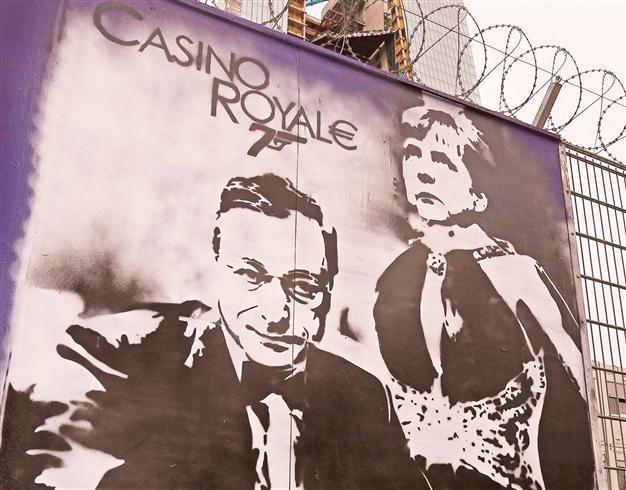Drones given new task to catch lawbreakers
BERLIN / CAPE TOWN

A graffiti depicting European Central Bank President Mario Draghi and German Chancellor Merkel is seen in Frankfurt in this photo. German railways will use mini-drones to stop vandals. REUTERS photo
Germany’s railway operator plans to deploy mini drones to catch vandals who deface its trains with graffiti, with the aerial vehicles shooting thermal images of its train depots at night.Deutsche Bahn plans to soon start testing the vehicles, which have four helicopter-style rotors and can shoot high-resolution pictures. “We are going to use this technology in problem areas, where taggers are most active,” an official who asked not to be named told Agence France-Presse.
A “pilot” remotely steers the vehicles at heights of up to 150 meters and speeds of up to 54 kilometers per hour. An operator evaluates the images, which the company plans to use as evidence. Deutsche Bahn said it suffered property damage last year worth $10 million from people spray-painting its carriages.
Jens-Oliver Voss, a spokesman for Deutsche Bahn, said that because of Germany’s privacy laws the drones would not be used near stations or other areas where members of the public might be caught on film. Internet giant Google ran into problems in Germany when it filmed streets for its global Street View project, with thousands of residents complaining and Google being forced to blur many of the images.
“The drones will not be used at stations, but at places like depots. They can be used to search large areas, which are difficult to patrol on foot,” Voss said.
“They will be used in combination with security guards, identifying graffiti-sprayers so they can be apprehended by security forces, who can hand them over to police,” he added. Deutsche Bahn is refusing to say how many of the drones it has purchased.
Drones are also used for a war on rhino poachers in South Africa. An unmanned drone has been deployed to track suspected poachers in South Africa for the first time to help tackle the number of endangered rhino deaths, British daily The Telegraph reported on May 27.
Footage in court
The small, lightweight, battery-powered Falcon drones can be launched by hand in minutes and fly over a range of five miles for up to 90 minutes. They can pick out elephants, rhinos and lions as well as anyone that might be tracking them via high-resolution infrared cameras.
Their operators use statistical analysis of when and where previous rhino killings took place to direct the drones and position the rangers close to poaching “hot spots.” When suspected hunters are identified, those tracking them can be prepared with the knowledge of how many they are facing and if they are armed. Once arrests are made, they will have video footage to present to the courts. In 2011, 448 South African rhinos were killed. So far this year, 350 have died, and it is projected the toll will reach 750 by December.
















